Influence of WC Particle Size on the Mechanical Properties and Residual Stress of HVOF Thermally Sprayed WC-10Co-4Cr Coatings
- PMID: 36013673
- PMCID: PMC9414634
- DOI: 10.3390/ma15165537
Influence of WC Particle Size on the Mechanical Properties and Residual Stress of HVOF Thermally Sprayed WC-10Co-4Cr Coatings
Abstract
Cermet coatings deposited using high-velocity oxy-fuel (HVOF) are widely used due to their excellent wear and corrosion resistance. The new agglomeration-rapid sintering method is an excellent candidate for the preparation of WC-Co-Cr feedstock powders. In this study, four different WC-10Co-4Cr feedstock powders containing WC particles of different sizes were prepared by the new agglomeration-rapid sintering method and deposited on steel substrates using the HVOF technique. The microstructures and mechanical properties of the coatings were investigated using scanning electron microscopy, X-ray diffraction, nanoindentation, and Vickers indentation. The through-thickness residual stress profiles of the coatings and substrate materials were determined using neutron diffraction. We found that the microstructures and mechanical properties of the coatings were strongly dependent on the WC particle size. Decarburization and anisotropic mechanical behaviors were exhibited in the coatings, especially in the nanostructured coating. The coatings containing nano- and medium-sized WC particles were dense and uniform, with a high Young's modulus and hardness and the highest fracture toughness among the four coatings. As the WC particle size increased, the compressive stress in the coating increased considerably. Knowledge of these relationships enables the optimization of feedstock powder design to achieve superior mechanical performance of coatings in the future.
Keywords: WC–10Co–4Cr; mechanical property; residual stress; thermal spray.
Conflict of interest statement
The authors declare no conflict of interest.
Figures

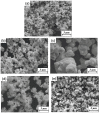
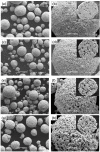
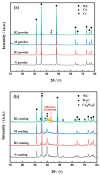



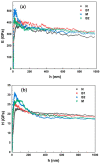
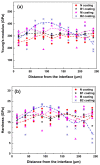




References
-
- Szymański K., Hernas A., Moskal G., Myalska H. Thermally sprayed coatings resistant to erosion and corrosion for power plant boilers—A review. Surf. Coat. Technol. 2015;268:153–164. doi: 10.1016/j.surfcoat.2014.10.046. - DOI
-
- Wu Y., Hong S., Zhang J., He Z., Guo W., Wang Q., Li G. Microstructure and cavitation erosion behavior of WC–Co–Cr coating on 1Cr18Ni9Ti stainless steel by HVOF thermal spraying. Int. J. Refract. Met. Hard Mater. 2012;32:21–26. doi: 10.1016/j.ijrmhm.2012.01.002. - DOI
-
- Yuan J., Ma C., Yang S., Yu Z., Li H. Improving the wear resistance of HVOF sprayed WC-Co coatings by adding submicron-sized WC particles at the splats’ interfaces. Surf. Coat. Technol. 2016;285:17–23. doi: 10.1016/j.surfcoat.2015.11.017. - DOI
-
- Wei Z., Kunyang F., Cong H., Zijing L., Weicai W., Taimin G. Effect of sintering temperature on the properties of rapid agglomerate sintered WC-10Co-4Cr powders and its HVOF coatings. Mater. Rev. 2022;36:74–79. doi: 10.11896/cldb.20120041. - DOI
-
- Gong T., Yao P., Zuo X., Zhang Z., Xiao Y., Zhao L., Zhou H., Deng M., Wang Q., Zhong A. Influence of WC carbide particle size on the microstructure and abrasive wear behavior of WC–10Co–4Cr coatings for aircraft landing gear. Wear. 2016;362–363:135–145. doi: 10.1016/j.wear.2016.05.022. - DOI
Grants and funding
LinkOut - more resources
Full Text Sources
Research Materials

